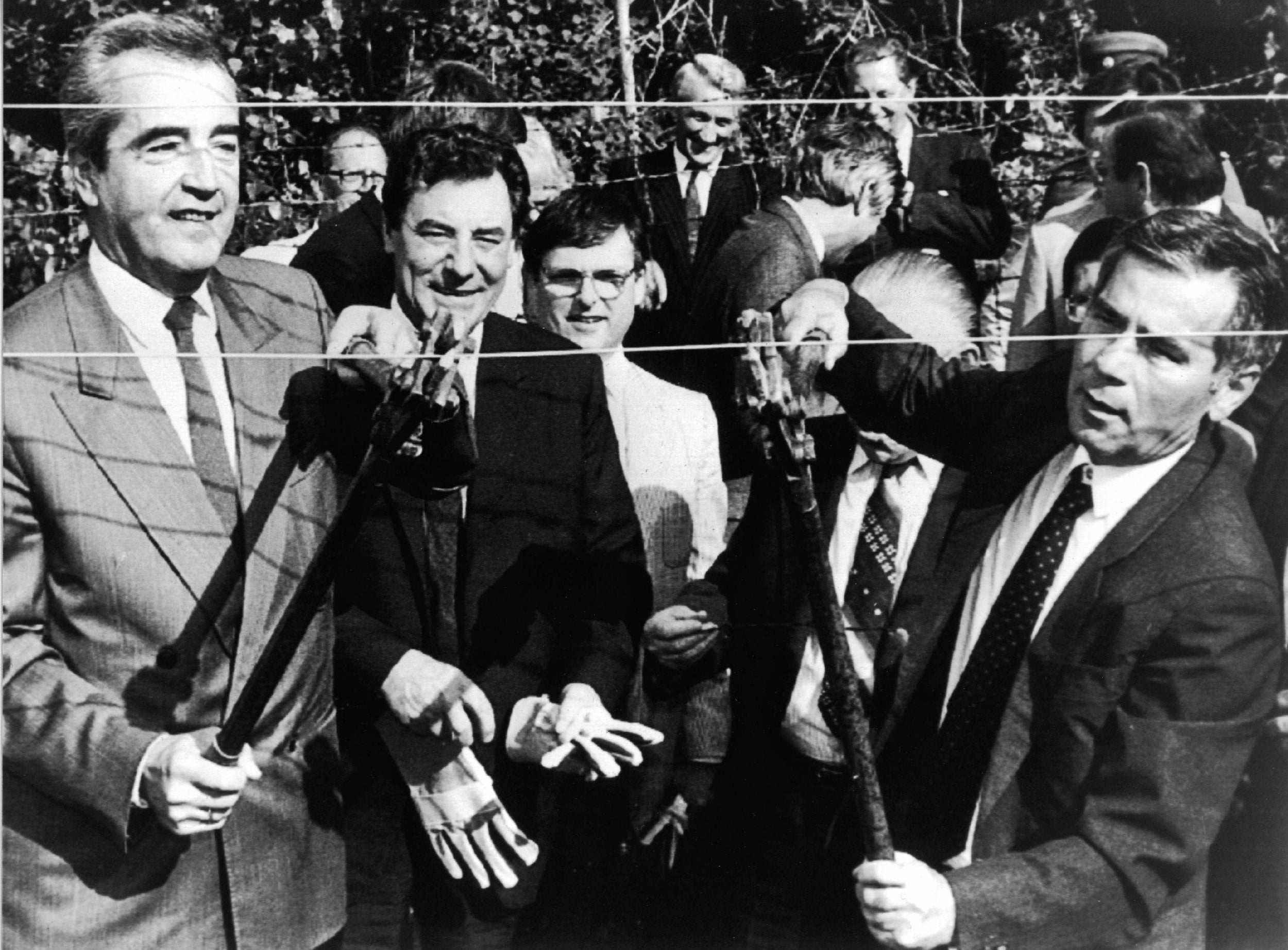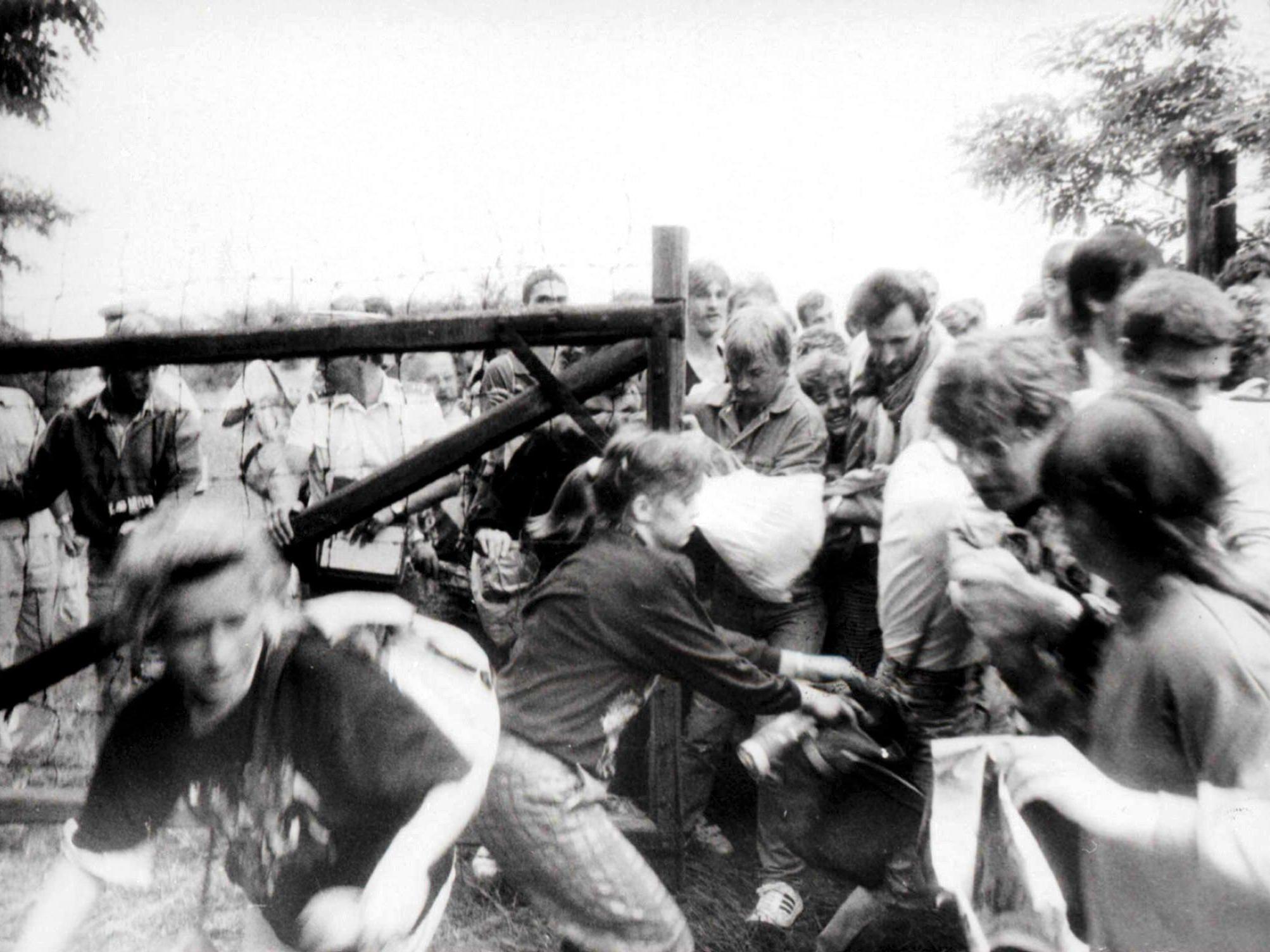Thirty years after the fall of the Iron Curtain, here’s what recent history can tell us about Europe today
Even as it copes with a wave of populism, xenophobia and neo-fascism, it’s a testament to the EU that the Europe of 30 years ago seems almost unimaginable


The placid Hungarian city of Sopron (population: 62,246) is not as famous as it ought to be. For it was there, some three decades ago, that a short ceremony marked the end of the Iron Curtain and, in due course, the end of Soviet Russian occupation of eastern Europe, which led, a couple of years later, to the dissolution of the Union of Soviet Socialist Republics and of the doctrine of Marxist-Lenism itself.
So, quite a big deal for an otherwise inconsequential place. Sopron was chosen because it sat just about on the border between Hungary and the old Czechoslovakia on one side, part of the eastern bloc, and Austria to the west, part of the west. On 27 June 1989, Austrian Foreign Minister Alois Mock joined his Hungarian counterpart Gyula Horn in cutting the barbed wire fence.
Visit Sopron now and you hardly notice a border at all. Austria, Hungary, the Czech Republic and Slovakia are all members of the European Union, enjoying the benefits of the single market and the free movement of people, money and goods and services across national frontiers. They are also a part of the Schengen system, which means that their citizens don’t even need to present a passport when passing through.
Where once you could be shot on sight or imprisoned for trying to smuggle yourself across in the back of some rickety old Skoda or Trabant, today juggernauts move vast transports of industrial components, food, drink and much else. In 2019, when farmers and factory workers, holiday makers and students go for a stroll into the neighbouring country, no-one sets the dogs after them. No-one will beat you up for taking a photograph of the town hall or the police station.
Away from the all the arguments about Brexit, that huge historical fact about the EU is how it has helped transform the fortunes of its members. It helped the western ones recover from the Second World War, and the east-central ones to rebuild after the Cold War.
Those who were under Russian rule contained peoples that have always been an integral part of European civilisation. Yet, as Russian forces swarmed across east and central Europe as the Nazis retreated at the end of the Second World War, they mostly stayed put, for another four decades. Proud nations were subjugated, but their histories and cultures were too powerful to extinguish. They remained part of the European family.
As Churchill famously said when he popularised the phrase Iron Curtain in a speech in 1946:
“From Stettin in the Baltic to Trieste in the Adriatic, an iron curtain has descended across the Continent. Behind that line lie all the capitals of the ancient states of Central and Eastern Europe. Warsaw, Berlin, Prague, Vienna, Budapest, Belgrade, Bucharest and Sofia, all these famous cities and the populations around them lie in what I must call the Soviet sphere, and all are subject in one form or another, not only to Soviet influence but to a very high and, in many cases, increasing measure of control from Moscow…
“The Communist parties, which were very small in all these Eastern States of Europe, have been raised to pre-eminence and power far beyond their numbers and are seeking everywhere to obtain totalitarian control.”
The Iron Curtain, its fences, walls and watchtowers was built to stop people from escaping the east. It was, in effect, a huge prison wall.
By 1989, for the best part of a century the states of eastern Europe had been at war with one another; suffered economic depression; under occupation; persecuting and being persecuted; exploiting and being exploited, and all too often impoverished.
Then freedom arrived.
Events then, and since, proved a few things, apart from the fact that Communism is incompatible with a free society and the honourable purpose of European integration.

The most relevant today is that nationalism is not the same as patriotism, and it too often can turn nasty. The Czechs, Poles, Hungarians, east Germans and others had never accepted their colonisation in the Soviet Empire by Stalin and his successors. Sometimes they would rebel, and on every occasion they would be crushed with tanks and the harshest measures of repression. Every regime had its puppet rulers and a vast network of spies, informants and secret police.
The difference in 1989 was that the Soviet Union at last had a leader, Mikhail Gorbachev, who knew the system was unsustainable, and would sooner or later break under the strain of trying to maintain military parity with the west and feeding and clothing its own people. So he simply let them go their own way, and allowed the Hungarians and Czechs to leave to open their borders with the west.
Of course, what we see now in parts of Eastern Europe, and, for that matter, everywhere from Sweden to Italy too, is that spirit of nationhood, the spirit of ‘89, being distorted into xenophobia and outright racism and neo-fascism. The greatest victims, historically, have been the Jewish people and the Roma; now they are joined by refugees from Syria and elsewhere. Perhaps that exhilarating sensation of liberation in 1989 and after has been forgotten by the thuggish gangs chasing after anyone with a brown skin in Chemnitz, in the former German Democratic Republic.
Governments led by the likes of Viktor Orban in Hungary concoct to their own brands of repression. In prosperous, peaceful Austria the nationalistic Freedom Party is a junior partner in national government. Miloš Zeman, the Czech Republic’s populist president is anti-immigrant and pro-Putin. We should be careful about overestimating how well entrenched human rights and democracy are anywhere in Europe.
And yet, even now, none, even the most extreme on the right, regard the EU as some sort of successor to the USSR. Indeed, nation states such as Poland and the Baltic republics of Estonia, Latvia and Lithuania regard the EU and Nato as defences against Russian influence. They, like others, may be irked by the EU’s ideas about migration or “interference” in economic affairs; but they do not want to leave, merely to reform it.
It is something of a tribute to the achievements of the European Union, then, that even as it copes with this wave of populism, it takes some considerable effort to imagine or recall the Europe of only three decades ago. Together, we have come a long way. That summer’s day in Sopron is worth commemorating.
Join our commenting forum
Join thought-provoking conversations, follow other Independent readers and see their replies
Comments